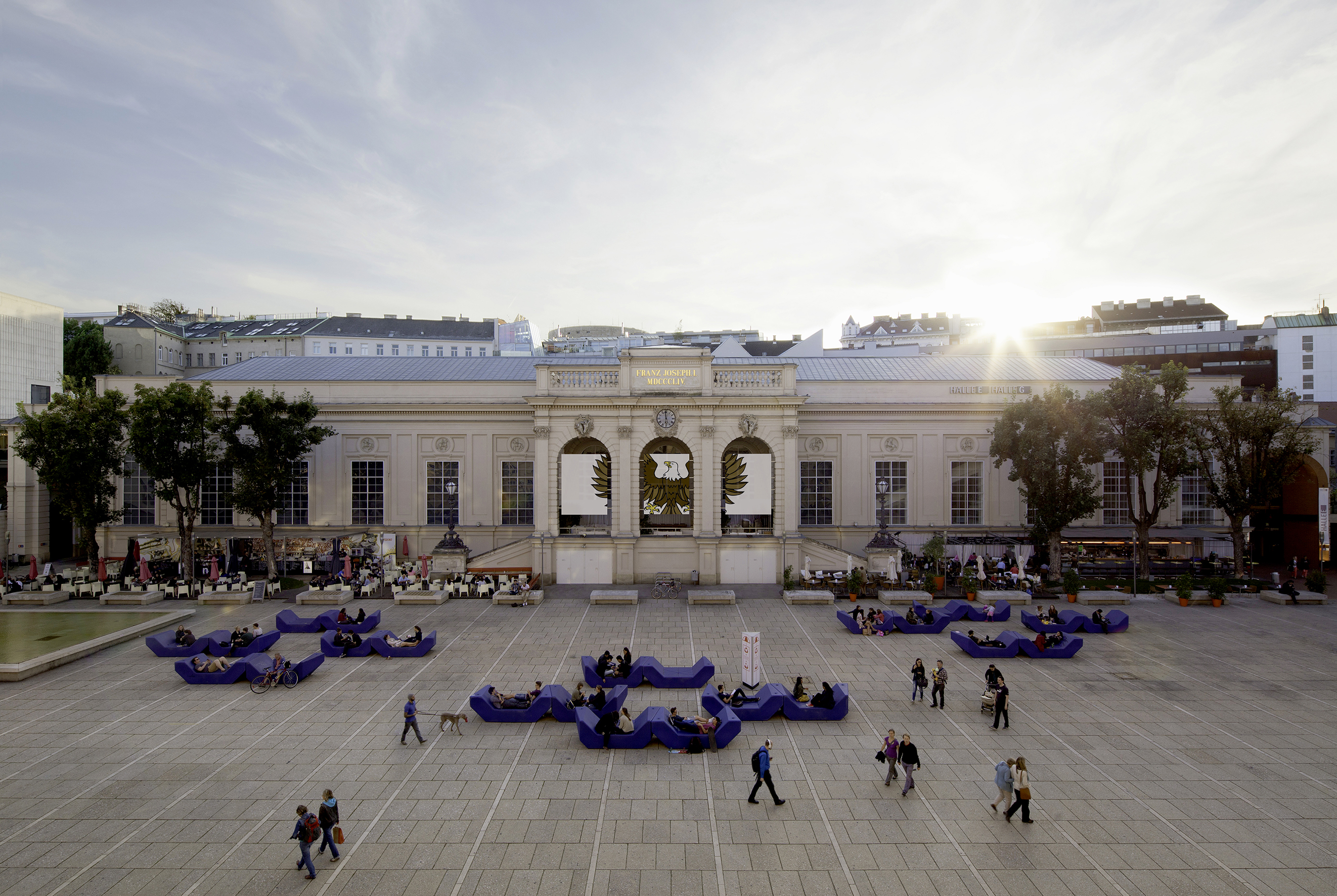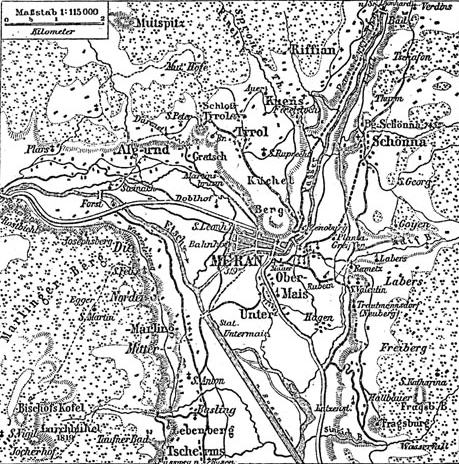|
Christian Eisenberger
Christian Eisenberger (born 1978 in Semriach near Graz) is an Austrian artist. Life After attending the Ortwein school in Graz in 1999, Christian Eisenberger studieTransmediale Kunstin the class of Brigitte Kowanz at the Academy of Fine Arts Vienna from 2000 to 2004. In 2013 he participated in the artist in residence programme of one world foundation (in cooperation with Galerie Krinzinger) in Sri Lanka. Christian Eisenberger lives and works in Vienna and Semriach. Work Christian Eisenberger initially became known for thousands of painted cardboard cutouts which he, at first anonymously, placed in public space. His motifs were social outcasts, such as immigrants or beggars. Later on, he portrayed famous figures of world history, often adorned with halos. These portraits were typically marked with a number, the last of them carrying the number 9975.1. The ephemeral nature of this early series can still be found in many of his works today. Christian Eisenberger's work as a who ... [...More Info...] [...Related Items...] OR: [Wikipedia] [Google] [Baidu] |
Graz
Graz (; sl, Gradec) is the capital city of the Austrian state of Styria and second-largest city in Austria after Vienna. As of 1 January 2021, it had a population of 331,562 (294,236 of whom had principal-residence status). In 2018, the population of the Graz larger urban zone (LUZ) stood at 652,654, based on principal-residence status. Graz is known as a college and university city, with four colleges and four universities. Combined, the city is home to more than 60,000 students. Its historic centre ('' Altstadt'') is one of the best-preserved city centres in Central Europe. In 1999, the city's historic centre was added to the UNESCO list of World Heritage Sites and in 2010 the designation was expanded to include Eggenberg Palace (german: Schloss Eggenberg) on the western edge of the city. Graz was designated the Cultural Capital of Europe in 2003 and became a City of Culinary Delights in 2008. Etymology The name of the city, Graz, formerly spelled Gratz, most likely stems ... [...More Info...] [...Related Items...] OR: [Wikipedia] [Google] [Baidu] |
Vanitas
A ''vanitas'' (Latin for 'vanity') is a symbolic work of art showing the transience of life, the futility of pleasure, and the certainty of death, often contrasting symbols of wealth and symbols of ephemerality and death. Best-known are ''vanitas'' still lifes, a common genre in the Low Countries of the 16th and 17th centuries; they have also been created at other times and in other media and genres. Etymology The Latin noun ''vanitas'' (from the Latin adjective ''vanus'' 'empty') means "emptiness", "futility", or "worthlessness", the traditional Christian view being that earthly goods and pursuits are transient and worthless. It alludes to Ecclesiastes , where ''vanitas'' translates the Hebrew word ''hevel'', which also includes the concept of transitoriness. Themes Vanitas themes were common in medieval funerary art, with most surviving examples in sculpture. By the 15th century, these could be extremely morbid and explicit, reflecting an increased obsession with de ... [...More Info...] [...Related Items...] OR: [Wikipedia] [Google] [Baidu] |
Austrian Artists
Austrian may refer to: * Austrians, someone from Austria or of Austrian descent ** Someone who is considered an Austrian citizen, see Austrian nationality law * Austrian German dialect * Something associated with the country Austria, for example: ** Austria-Hungary ** Austrian Airlines (AUA) ** Austrian cuisine ** Austrian Empire ** Austrian monarchy ** Austrian German (language/dialects) ** Austrian literature ** Austrian nationality law ** Austrian Service Abroad ** Music of Austria ** Austrian School of Economics * Economists of the Austrian school of economic thought * The Austrian Attack variation of the Pirc Defence chess opening. See also * * * Austria (other) * Australian (other) * L'Autrichienne (other) is the feminine form of the French word , meaning "The Austrian". It may refer to: *A derogatory nickname for Queen Marie Antoinette of France *L'Autrichienne (film), ''L'Autrichienne'' (film), a 1990 French film on Marie Antoinette wit ... [...More Info...] [...Related Items...] OR: [Wikipedia] [Google] [Baidu] |
Living People
Related categories * :Year of birth missing (living people) / :Year of birth unknown * :Date of birth missing (living people) / :Date of birth unknown * :Place of birth missing (living people) / :Place of birth unknown * :Year of death missing / :Year of death unknown * :Date of death missing / :Date of death unknown * :Place of death missing / :Place of death unknown * :Missing middle or first names See also * :Dead people * :Template:L, which generates this category or death years, and birth year and sort keys. : {{DEFAULTSORT:Living people 21st-century people People by status ... [...More Info...] [...Related Items...] OR: [Wikipedia] [Google] [Baidu] |
Kunsthalle Wien
Kunsthalle Wien is the city of Vienna's institution for international contemporary art and discourse with two locations, in the Museumsquartier and at Karlsplatz. Kunsthalle Wien does not have a collection of its own, but instead dedicates its changing solo and thematic exhibitions to art and its relations to social change. It produces exhibitions, researches art practices, and supports local and international artists. It seeks to ground its knowledge of international contemporary art in and for Vienna, and advocates for the usefulness of artistic thinking in the wider public sphere. History and architecture Since it opened in 1992 – originally shaped like a container – Kunsthalle Wien, as an urban institution, presents national and international contemporary art. In this respect, it is both a location for established art and negotiation site for current societal issues as well as future developments. In the beginning, Kunsthalle Wien was a makeshift structure situated at ... [...More Info...] [...Related Items...] OR: [Wikipedia] [Google] [Baidu] |
Linz
Linz ( , ; cs, Linec) is the capital of Upper Austria and third-largest city in Austria. In the north of the country, it is on the Danube south of the Czech border. In 2018, the population was 204,846. In 2009, it was a European Capital of Culture. Geography Linz is in the centre of Europe, lying on the Paris–Budapest west–east axis and the Malmö–Trieste north–south axis. The Danube is the main tourism and transport connection that runs through the city. Approximately 29.27% of the city's wide area is grassland. A further 17.95% are covered with forest. All the rest areas fall on water (6.39%), traffic areas and land. Districts Since January 2014 the city has been divided into 16 statistical districts: Before 2014 Linz was divided into nine districts and 36 statistical quarters. They were: #Ebelsberg #Innenstadt: Altstadtviertel, Rathausviertel, Kaplanhofviertel, Neustadtviertel, Volksgartenviertel, Römerberg-Margarethen #Kleinmünchen: Kleinmünchen, Neue ... [...More Info...] [...Related Items...] OR: [Wikipedia] [Google] [Baidu] |
Colombo
Colombo ( ; si, කොළඹ, translit=Koḷam̆ba, ; ta, கொழும்பு, translit=Koḻumpu, ) is the executive and judicial capital and largest city of Sri Lanka by population. According to the Brookings Institution, Colombo metropolitan area has a population of 5.6 million, and 752,993 in the Municipality. It is the financial centre of the island and a tourist destination. It is located on the west coast of the island and adjacent to the Greater Colombo area which includes Sri Jayawardenepura Kotte, the legislative capital of Sri Lanka, and Dehiwala-Mount Lavinia. Colombo is often referred to as the capital since Sri Jayawardenepura Kotte is itself within the urban/suburban area of Colombo. It is also the administrative capital of the Western Province and the district capital of Colombo District. Colombo is a busy and vibrant city with a mixture of modern life, colonial buildings and monuments. Due to its large harbour and its strategic position along th ... [...More Info...] [...Related Items...] OR: [Wikipedia] [Google] [Baidu] |
Der Standard
''Der Standard'' is an Austrian daily newspaper published in Vienna. History and profile ''Der Standard'' was founded by Oscar Bronner as a financial newspaper and published its first edition on 19 October 1988. German media company Axel Springer acquired a stake in the paper in 1988 and sold it in 1995. Bronner remains the paper's publisher, Martin Kotynek is editor-in-chief. ''Der Standard'' sees itself as—in a Continental European sense (socially and culturally, but not economically)—liberal and independent. Third parties have described the paper as having a left-liberal stance. Until 2007, the editor-in-chief of the daily was Gerfried Sperl, Alexandra Föderl-Schmid succeeded him in the post. In 2002 the paper was one of four quality daily newspapers with nationwide distribution along with ''Salzburger Nachrichten'', ''Die Presse'', and ''Wiener Zeitung''. Although ''Der Standard'' is intended to be a national paper, in the past it had an undeniable tendency to focus on ... [...More Info...] [...Related Items...] OR: [Wikipedia] [Google] [Baidu] |
Merano
Merano (, , ) or Meran () is a city and ''comune'' in South Tyrol, northern Italy. Generally best known for its spa resorts, it is located within a basin, surrounded by mountains standing up to above sea level, at the entrance to the Passeier Valley and the Vinschgau. In the past, the city has been a popular place of residence for several scientists, literary people, and artists, including Franz Kafka, Ezra Pound, Paul Lazarsfeld, and also Empress Elisabeth of Austria, who appreciated its mild climate. Name Both the Italian () and the German () names for the city are used in English. The Ladin form of the name is . The official name of the municipality (''comune'') is ''Comune di Merano'' in Italian and ''Stadtgemeinde Meran'' in German (both are in official use). History In 17th-century Latin, the city was called ''Meranum''. Other archaic names are ''Mairania'' (from 857 AD) and ''an der Meran'' (from the 15th century). Origin The area has been inhabited since the third ... [...More Info...] [...Related Items...] OR: [Wikipedia] [Google] [Baidu] |
Expressionism
Expressionism is a modernist movement, initially in poetry and painting, originating in Northern Europe around the beginning of the 20th century. Its typical trait is to present the world solely from a subjective perspective, distorting it radically for emotional effect in order to evoke moods or ideas. Expressionist artists have sought to express the meaningVictorino Tejera, 1966, pages 85,140, Art and Human Intelligence, Vision Press Limited, London of emotional experience rather than physical reality. Expressionism developed as an avant-garde style before the First World War. It remained popular during the Weimar Republic,Bruce Thompson, University of California, Santa Cruzlecture on Weimar culture/Kafka'a Prague particularly in Berlin. The style extended to a wide range of the arts, including expressionist architecture, painting, literature, theatre, dance, film and music. The term is sometimes suggestive of angst. In a historical sense, much older painters such as Matthia ... [...More Info...] [...Related Items...] OR: [Wikipedia] [Google] [Baidu] |
Academy Of Fine Arts Vienna
The Academy of Fine Arts Vienna (german: link=no, Akademie der bildenden Künste Wien) is a public art school in Vienna, Austria. History The Academy of Fine Arts Vienna was founded in 1692 as a private academy modelled on the Accademia di San Luca and the Parisien Académie de peinture et de sculpture by the court-painter Peter Strudel, who became the ''Praefectus Academiae Nostrae''. In 1701 he was ennobled by Emperor Joseph I as ''Freiherr'' (Baron) of the Empire. With his death in 1714, the academy temporarily closed. On 20 January 1725, Emperor Charles VI appointed the Frenchman Jacob van Schuppen as Prefect and Director of the Academy, which was refounded as the ''k.k. Hofakademie der Maler, Bildhauer und Baukunst'' (Imperial and Royal Court Academy of painters, sculptors and architecture). Upon Charles's death in 1740, the academy at first declined, however during the rule of his daughter Empress Maria Theresa, a new statute reformed the academy in 1751. The prestige ... [...More Info...] [...Related Items...] OR: [Wikipedia] [Google] [Baidu] |






.jpg)